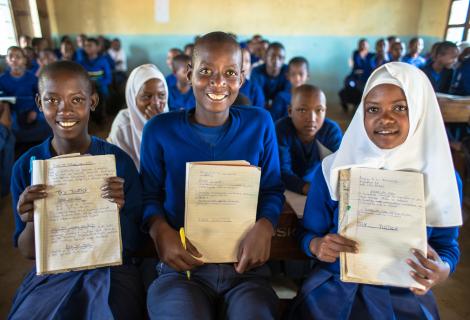
Breaking out of the Bubble to Transform Education Financing
How the Strategic Finance Agenda from the Transforming Education Summit Could Deliver Breakthroughs in 89 Countries
A year ago the Transforming Education Summit (TES) was the highest level education meeting in history, convening Heads of States on an unprecedented scale to talk about the education crisis.
ActionAid’s Head of Programmes, David Archer, was the Stakeholder Convenor for the finance track of the summit, helping to draft and edit the TES Discussion Paper on Financing which was developed with 193 UN Member States. This led to the development of a Call to Action on Financing Education endorsed by the UN Secretary General, that was launched at the Summit on 19th September 2022.
One year on it is clear that delivering on this transformative finance agenda will be key to achieving the Sustainable Development Goal on Education by 2030. But to make the necessary breakthroughs the education community at national and international levels must break out of its bubble and engage in much more strategic dialogue and action around tax justice, debt justice and ending the cult of austerity.
The Global Partnership for Education (GPE) is the most influential global actor on education, linking Ministries of Education from across the Global South in a partnership with bilateral and multilateral donors, civil society representatives, teacher unions and private foundations. The policy brief that you can download below, published today, shows the scale of transformation that could be achieved through action on the TES recommendations on tax, debt and austerity in 89 partner and eligible countries connected to this global partnership for education.
There are some very striking findings:
- GPE countries are losing over $47 billion every year in potential tax revenue, largely owing to aggressive tax avoidance;
- Over 70% of GPE countries have a low tax-to-GDP ratio (under 20%);
- If GPE countries increased their tax-to-GDP ratios by five percentage points they could raise an additional US$ 455 billion;
- If 20% of this sum was earmarked for education that would raise over $93 billion for education every year;
- Of the 71 GPE partner countries where data is available 90% are at significant risk of debt distress;
- 25 countries are spending more on servicing their external debts than they are on education;
- 75% of GPE countries are planning to cut overall public spending as a percentage of GDP over the coming three years;
- Where intensive studies have been conducted to look at the IMF policy steer on public sector wage bills:, 67% of countries (24 countries) have been advised to cut wage bills and 28% (10 countries) have been advised to freeze them.
This new research has exposed clearly that strategic action on finance is essential for any government committed to achieving education goals. But national action needs to be reinforced internationally. GPE has an ambitious strategy to leverage the power of its partnership for system transformation – but transformation will only be possible by thinking out of the box and going in the bold new directions proposed at TES. GPE should be in the forefront of action on progressive taxation, debt justice and ending the cult of austerity. If the largest global partnership for education does not step forward and champion this agenda, it is not clear who will.
The World Education Blog run by UNESCO’s Global Education Monitoring Report, has published a blog about this policy brief that you can see here: https://wp.me/pdFXBX-8wd